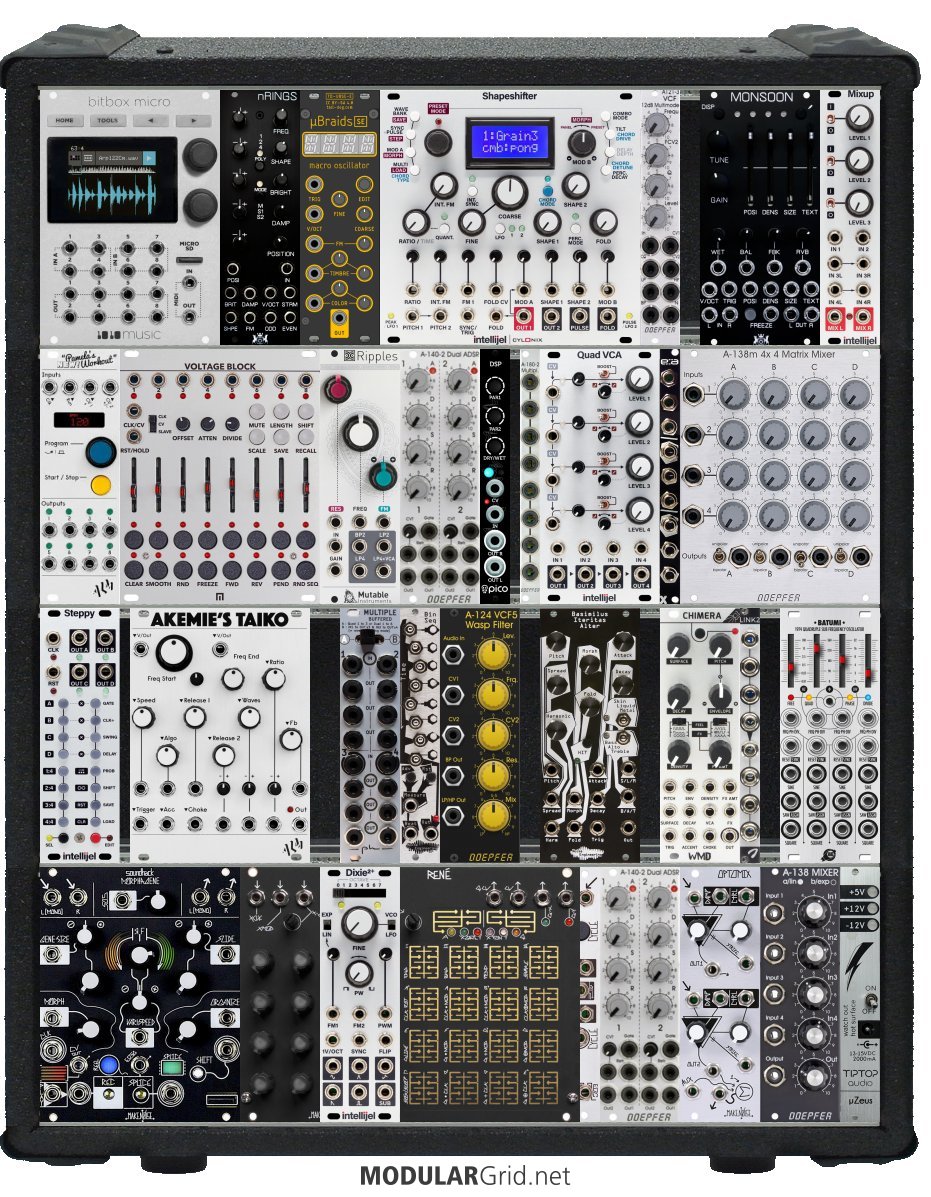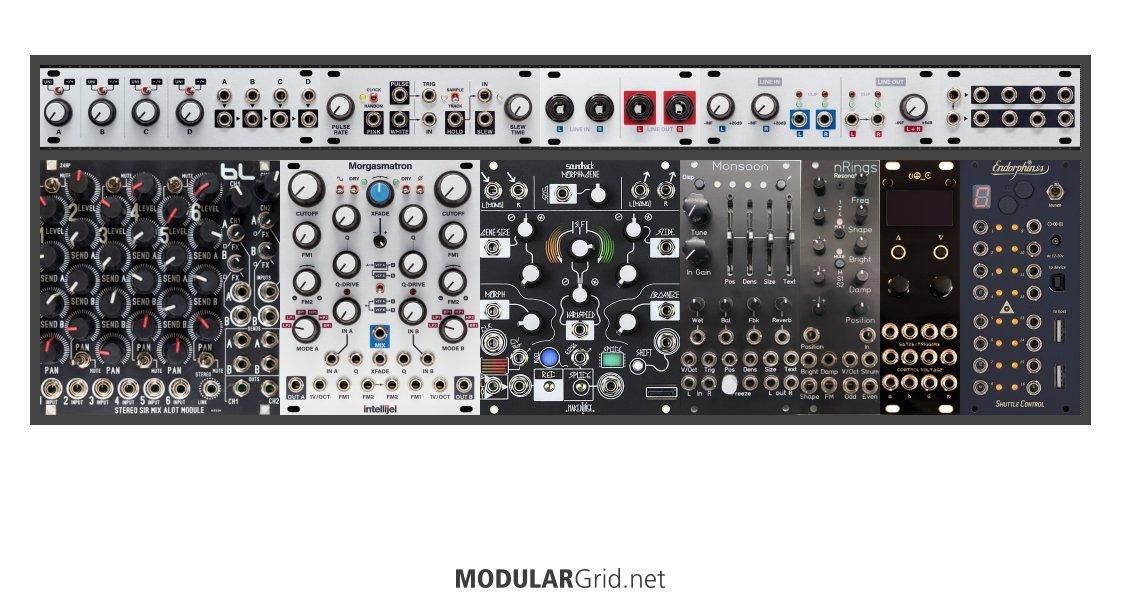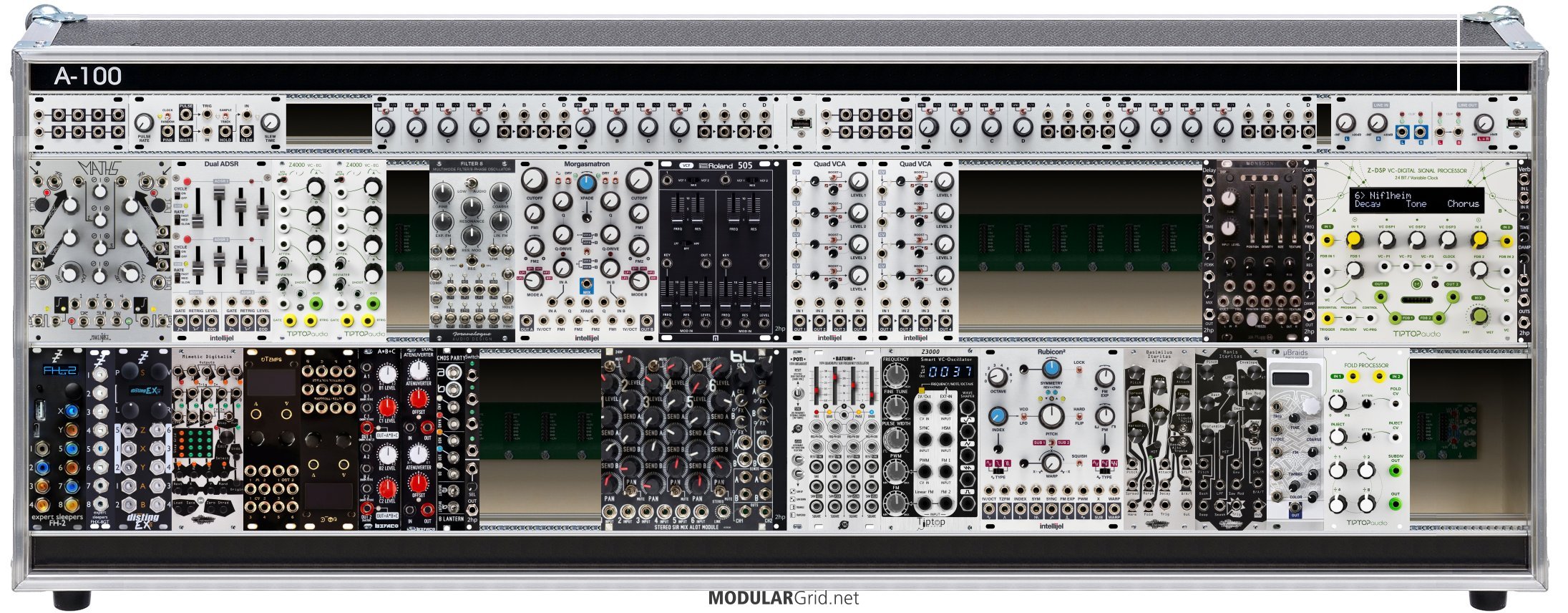No problem.
So here are my initial thoughts:
I see two passive mults. Passive mults aren't bad. But if you're going to dedicate rack space to mults go with active (powered) mults. When you passively split signals you might experience a voltage drop in the splits. When it comes to triggers, gates, and audio that's not a big deal. If you're splitting control voltages... especially pitch... that will be an issue.
The Morphagene, Monsoon, Pico, and Disting are all capable of stereo outputs. You also have a Dixie, a dedicated percussion module, etc. You don't have a mixer that will handle stereo and the Optimix is more of a low-pass-gate. You probably want to invest in a stereo mixer. There are a few on the market ranging from about $250US to well over $700. Blue Lantern, Happy Nerding, Roland, etc. are good brands to look at. I have a Blue Lantern Sir Mix A Lot. It's inexpensive and does the job.
The Batumi can always use a Poti expander (3HP) to get to all of those jumper settings that offer additional waveforms, sync and reset.
I don't see any dedicated envelope generators. For the basics, Doepfer just came out with their slim-line modules. I would have a couple. Don't underestimate the instant tweak-a-bility of a dedicated ADSR. The Maths is okay but only offers attack and decay. You have some digital modules capable of envelope generation... but you might find them a bit fiddly to change on the fly. Keep your mind open about adding them.
As far as ergonomics, you seem to have some like modules grouped together and others just scattered about. For example, I'd put the Braids after the KickAll. The Braids can be used for snares, hats as well as traditional sounds. I'd group all of your oscillators together.
If I get some time I might rework the rack for you with some suggestions.




